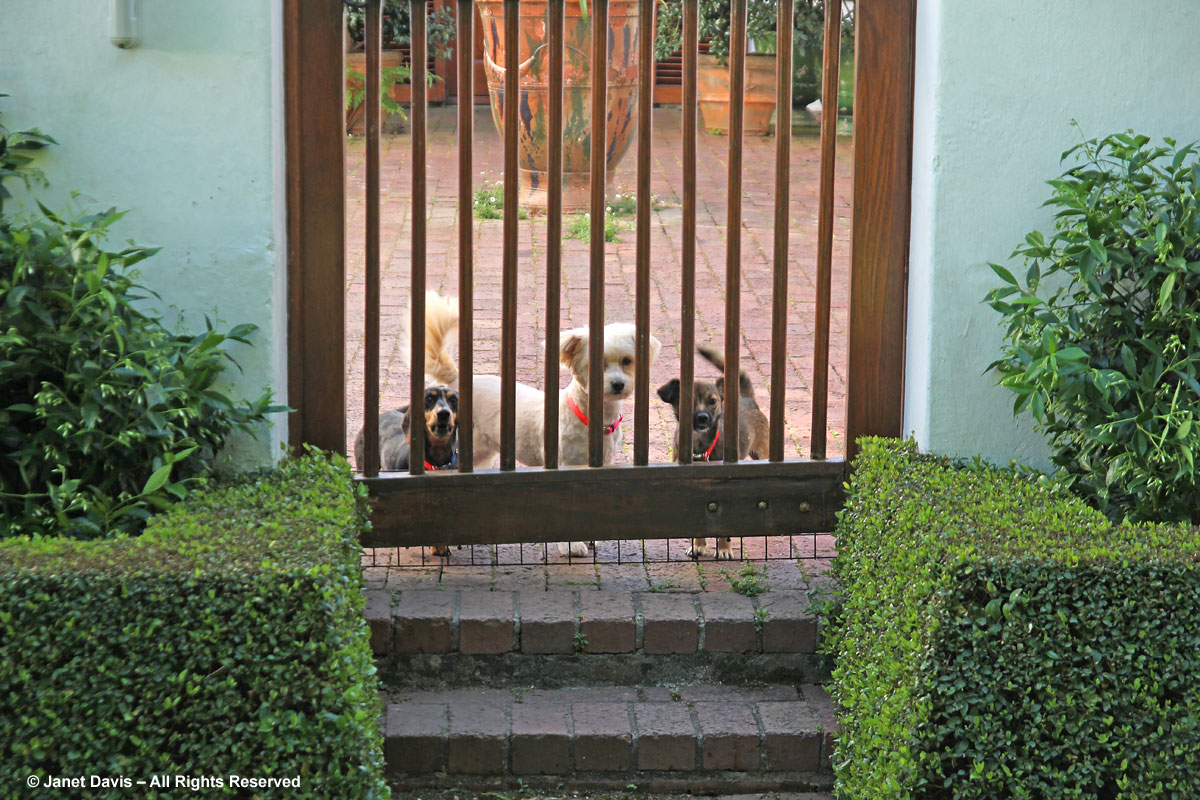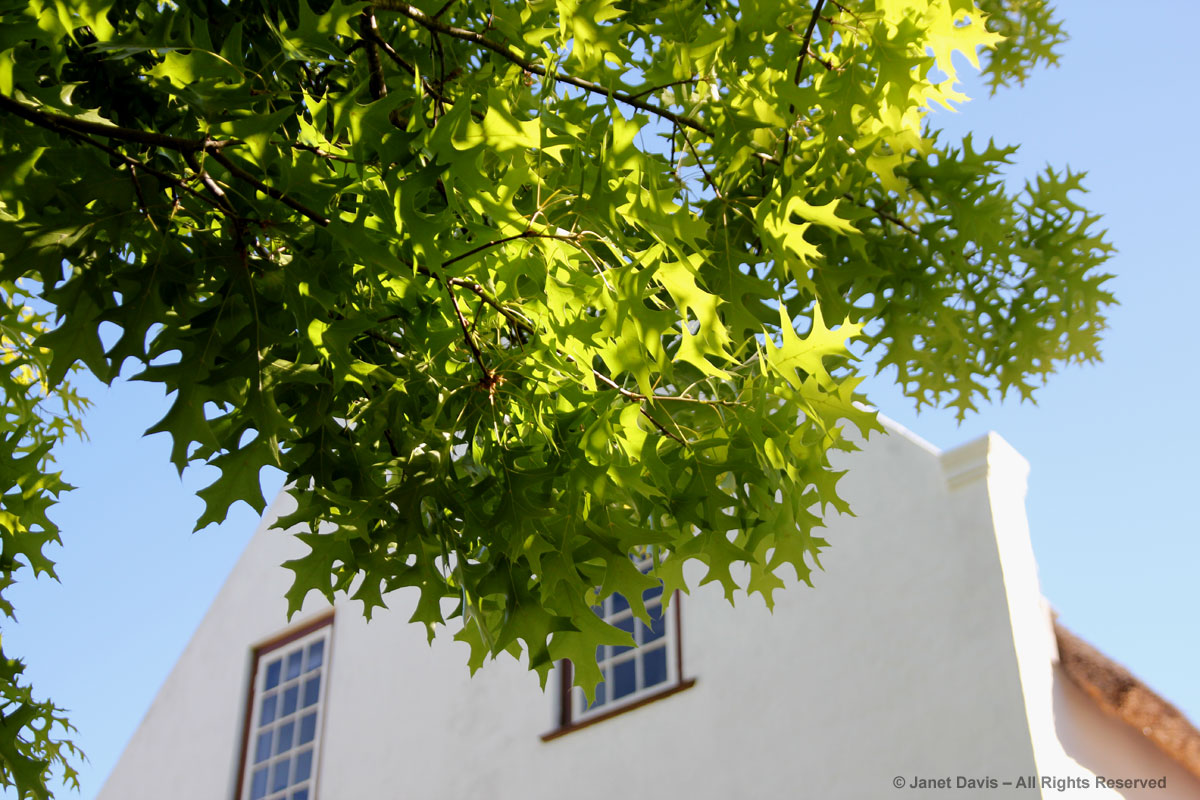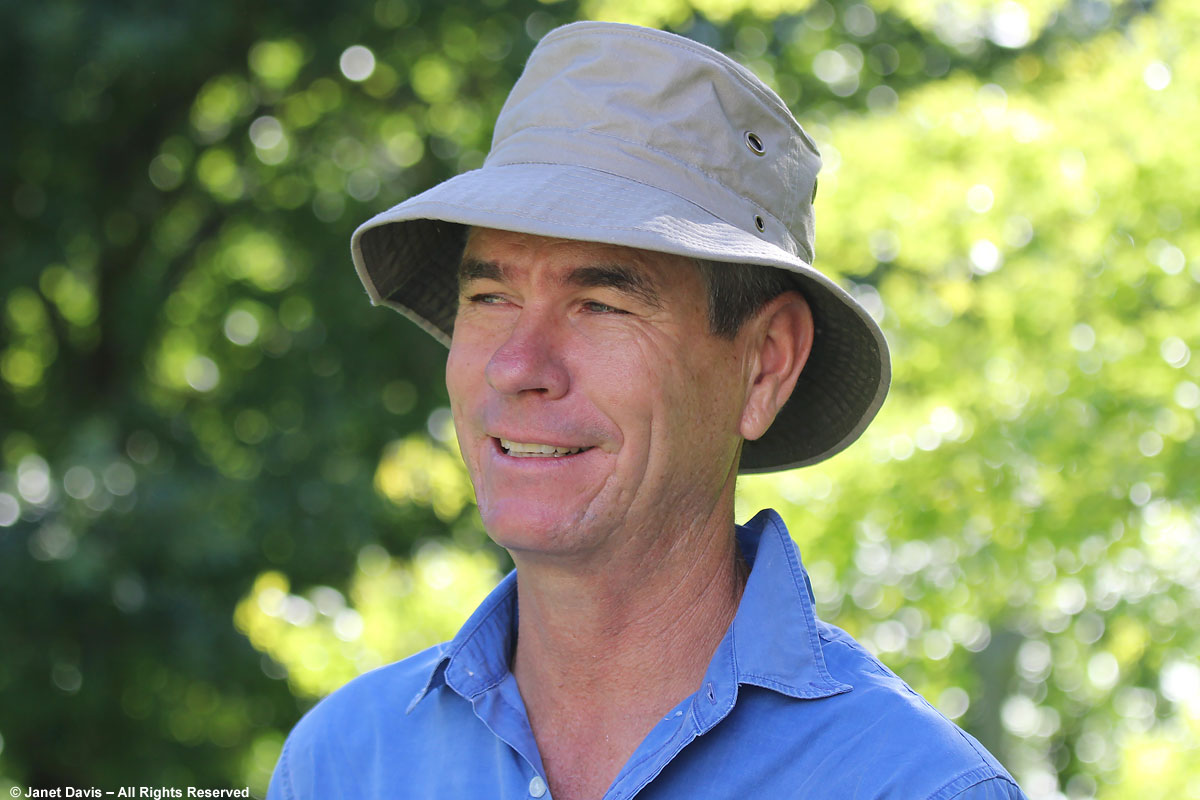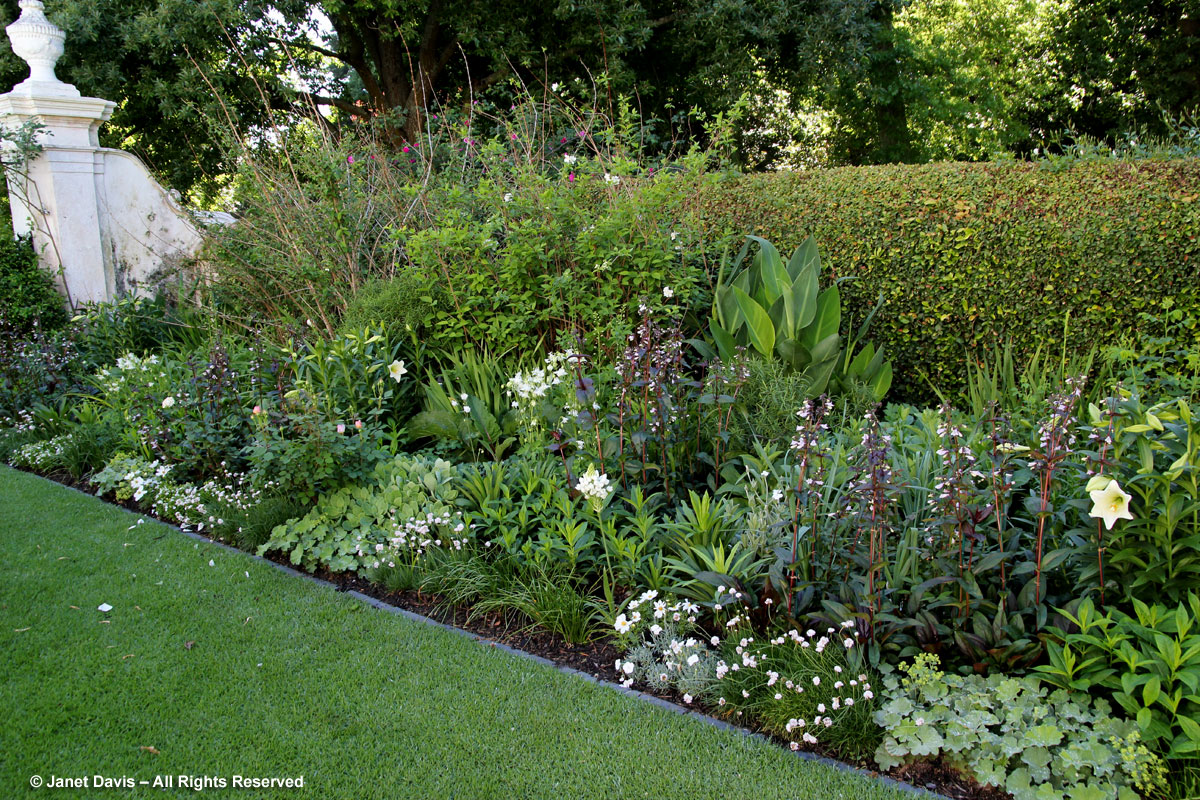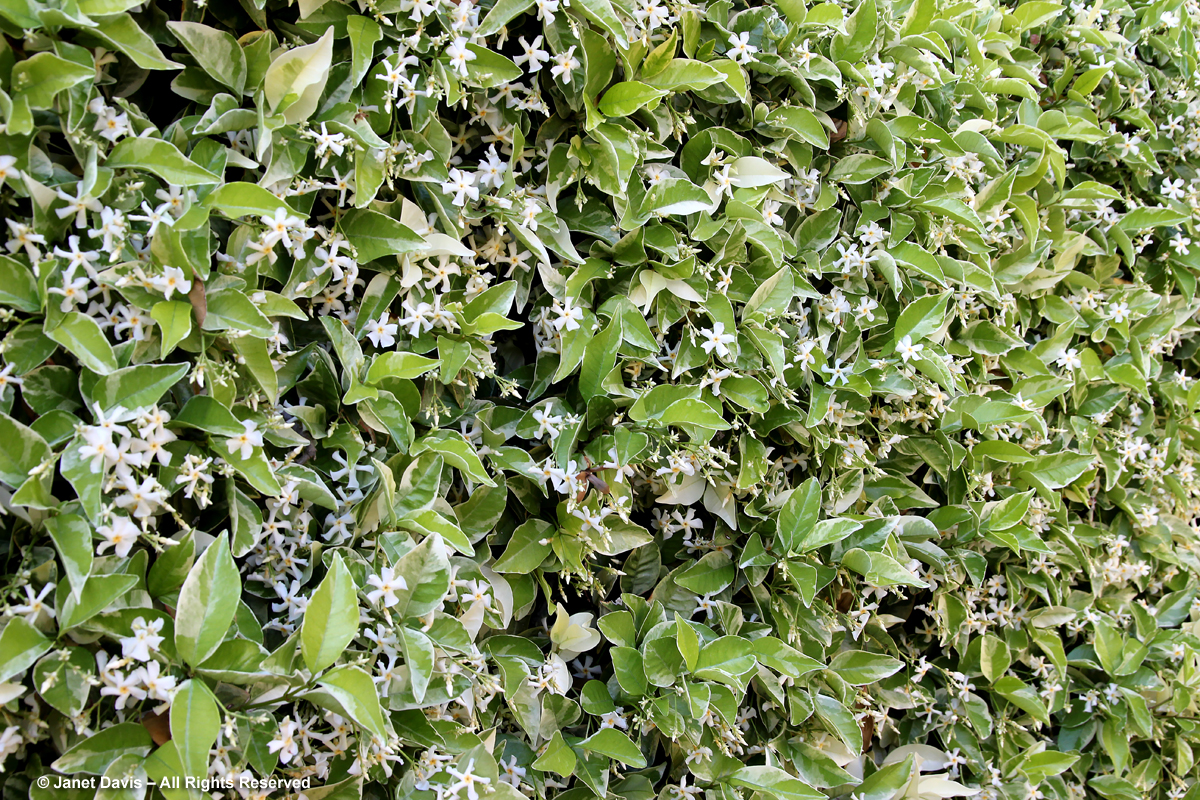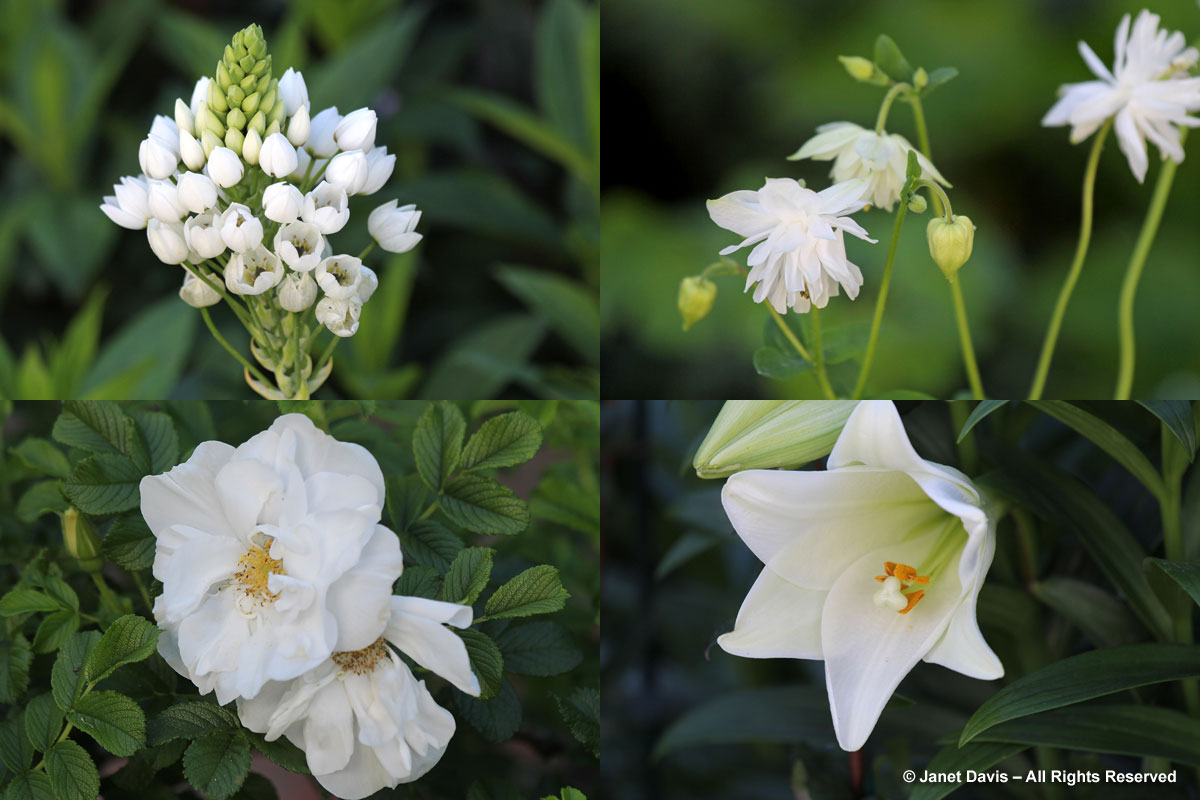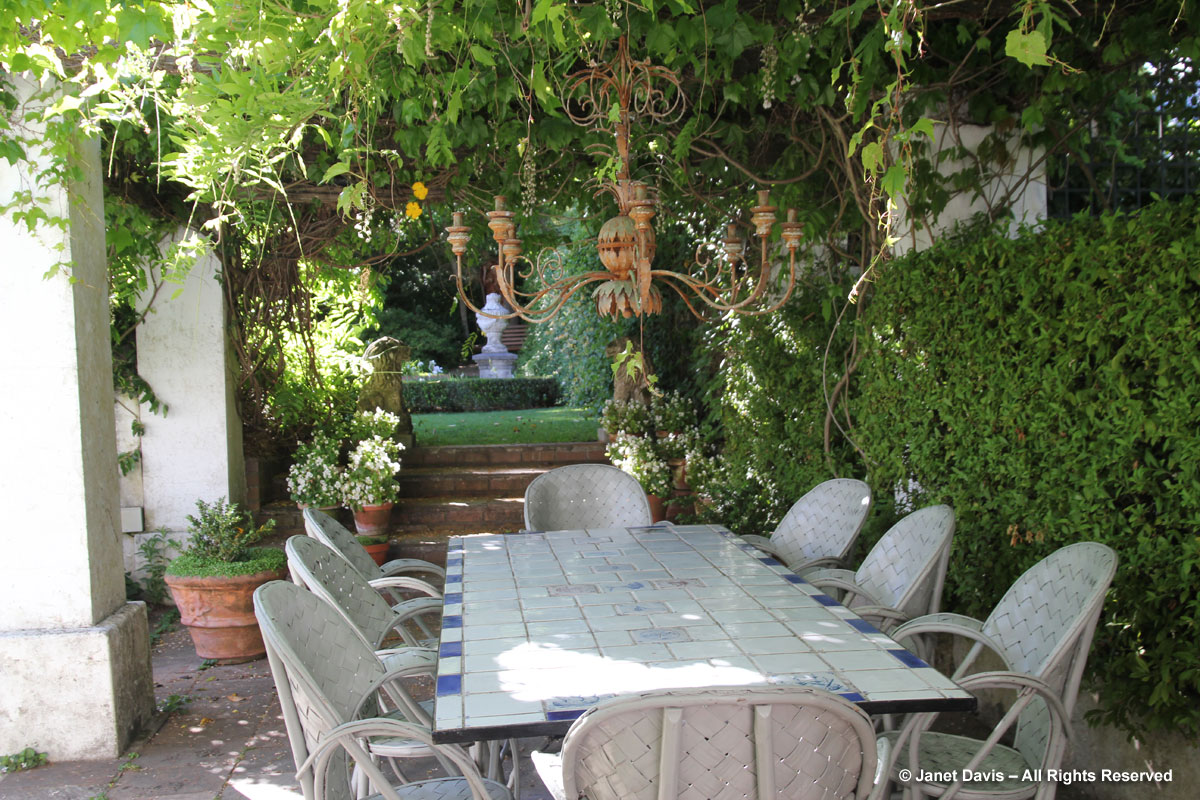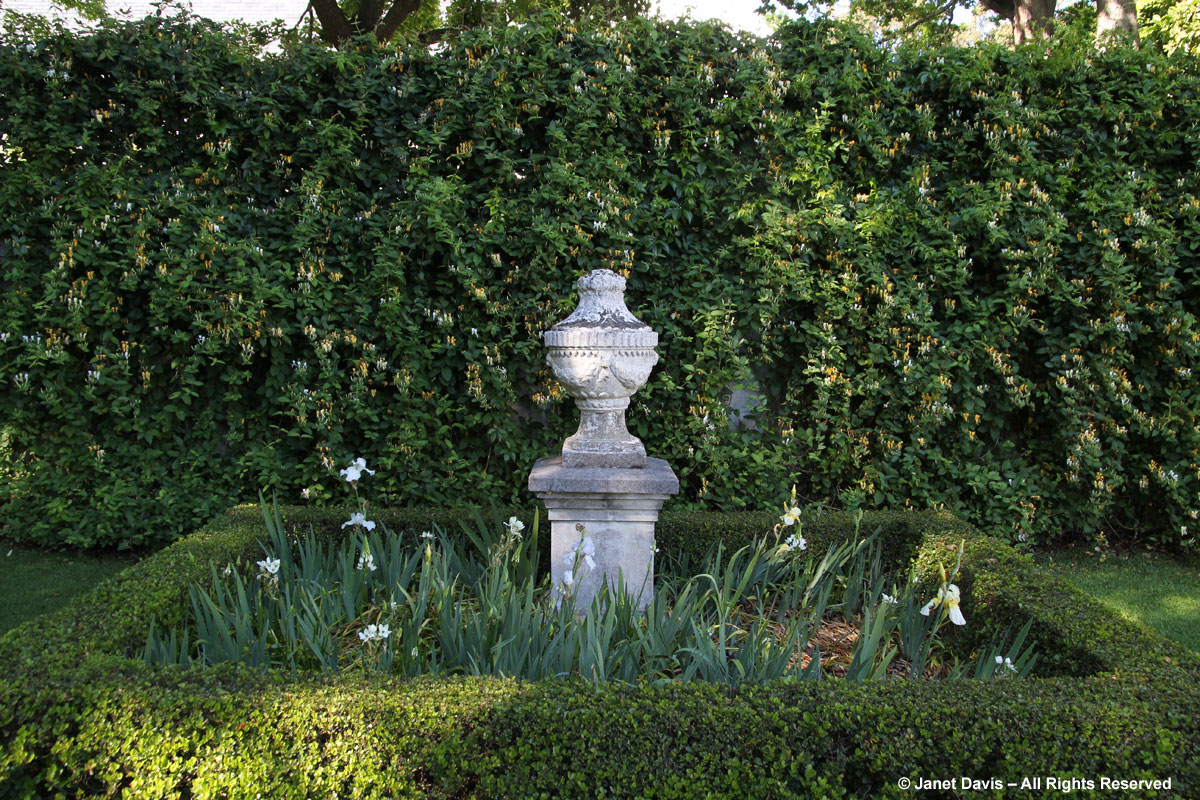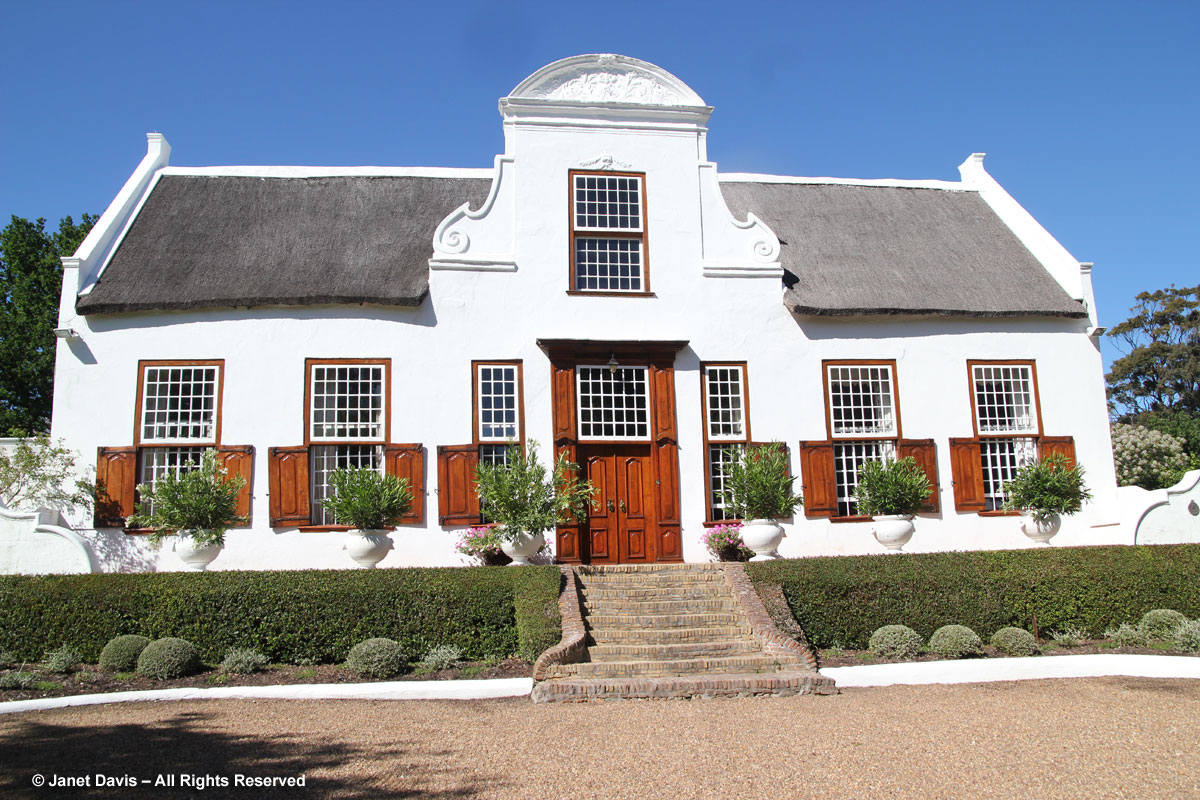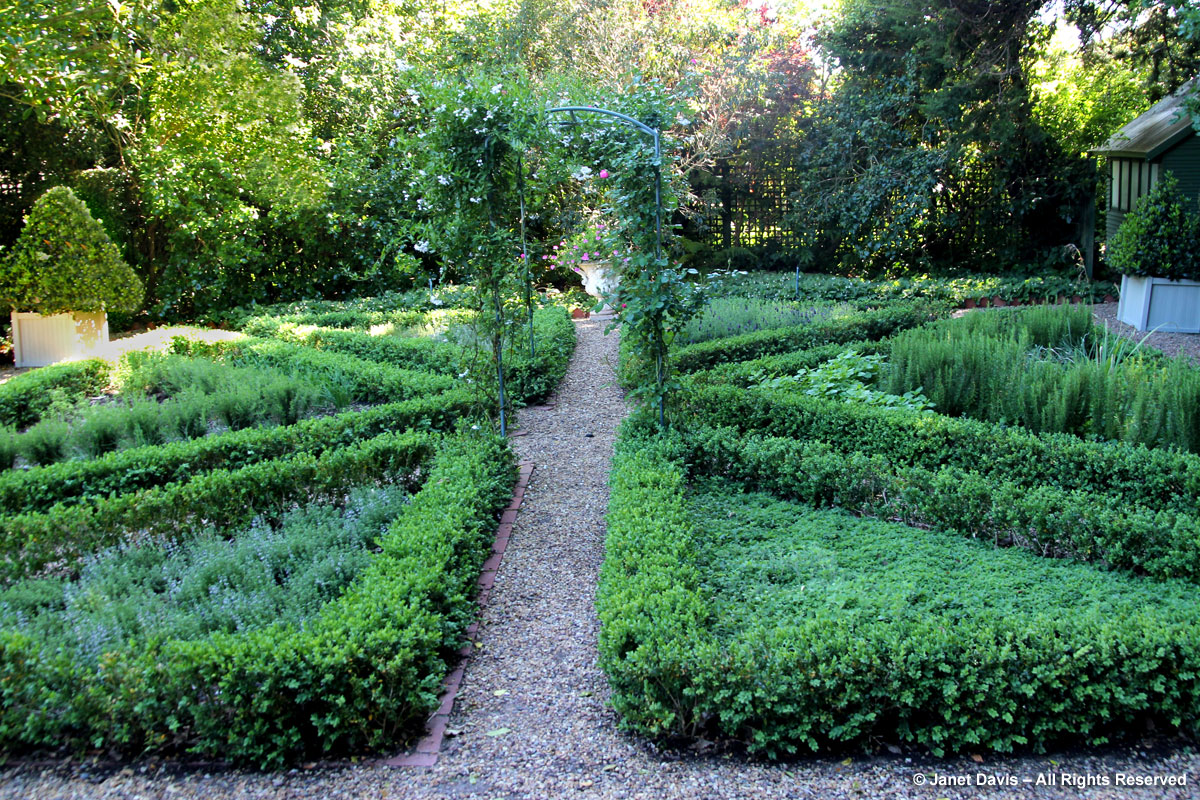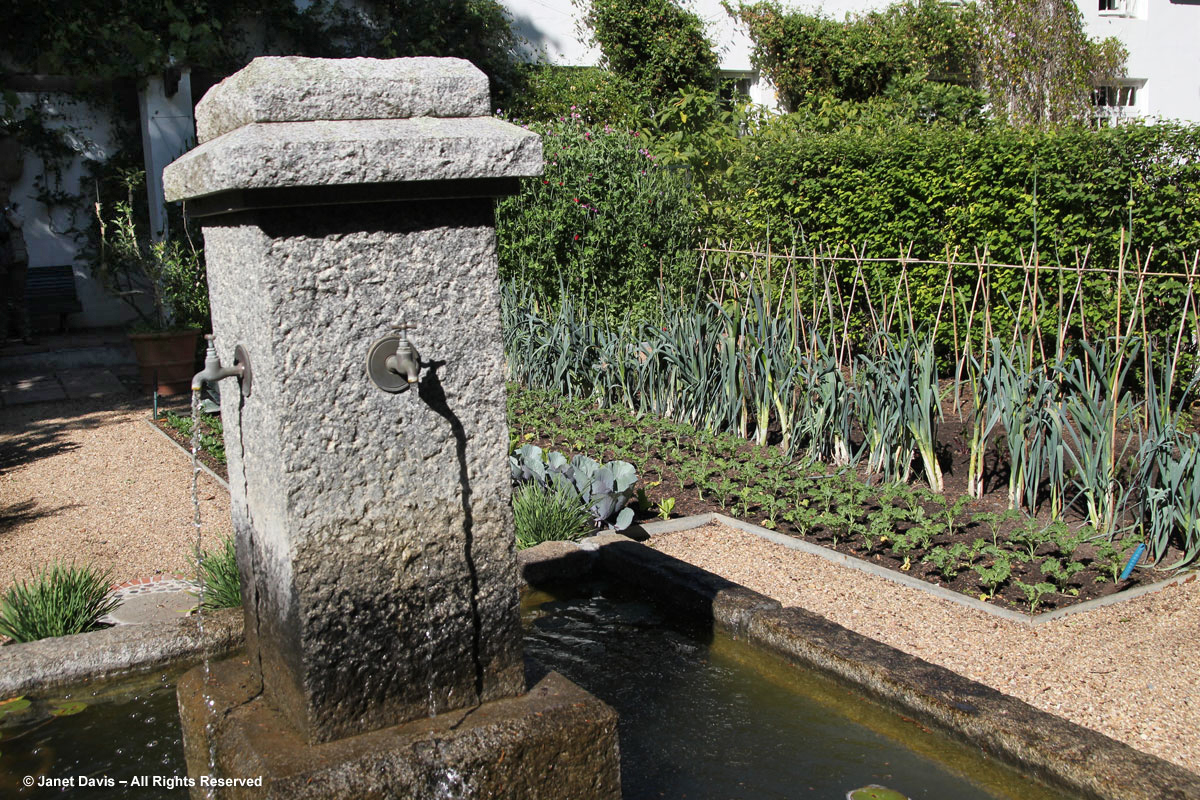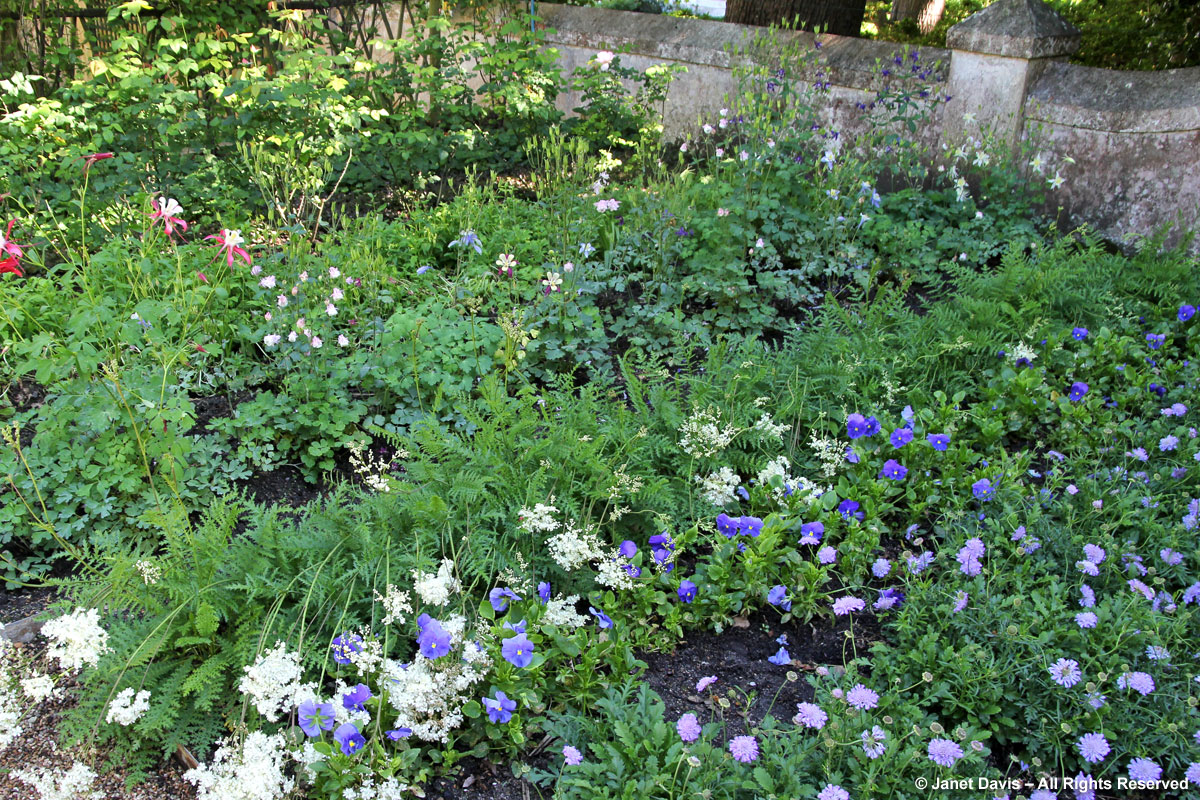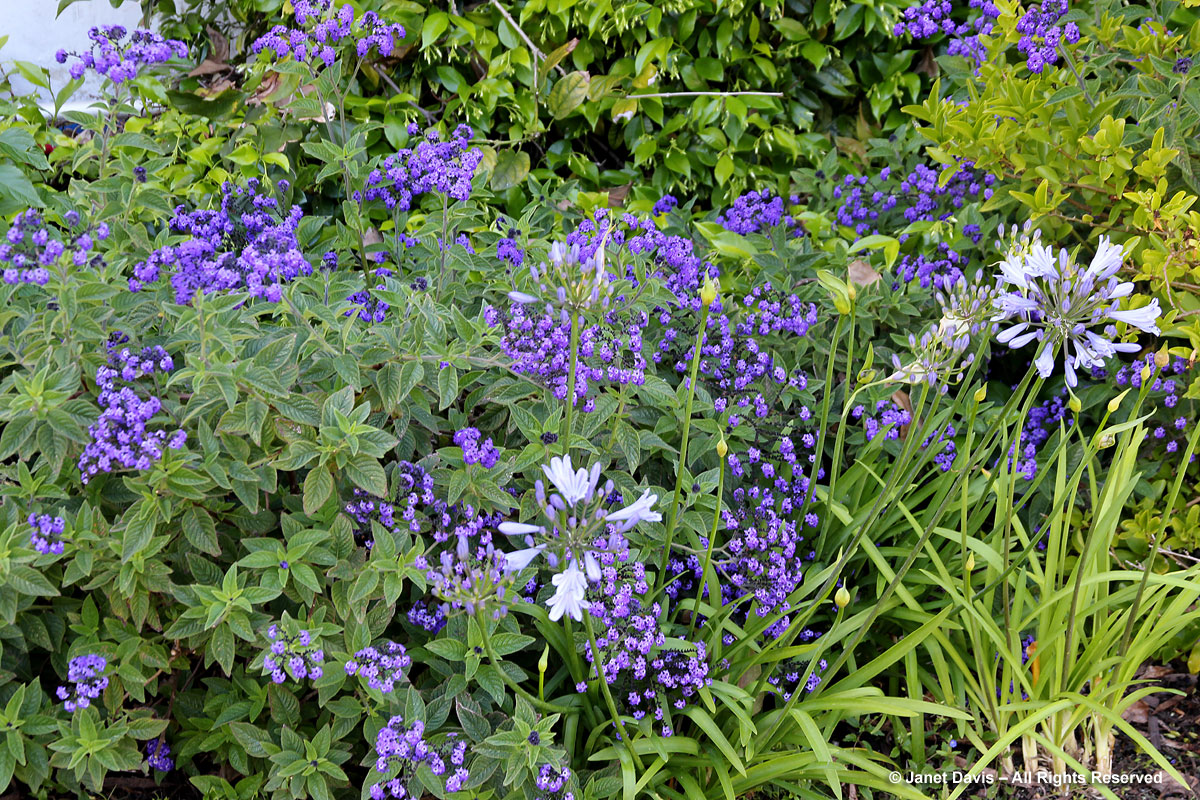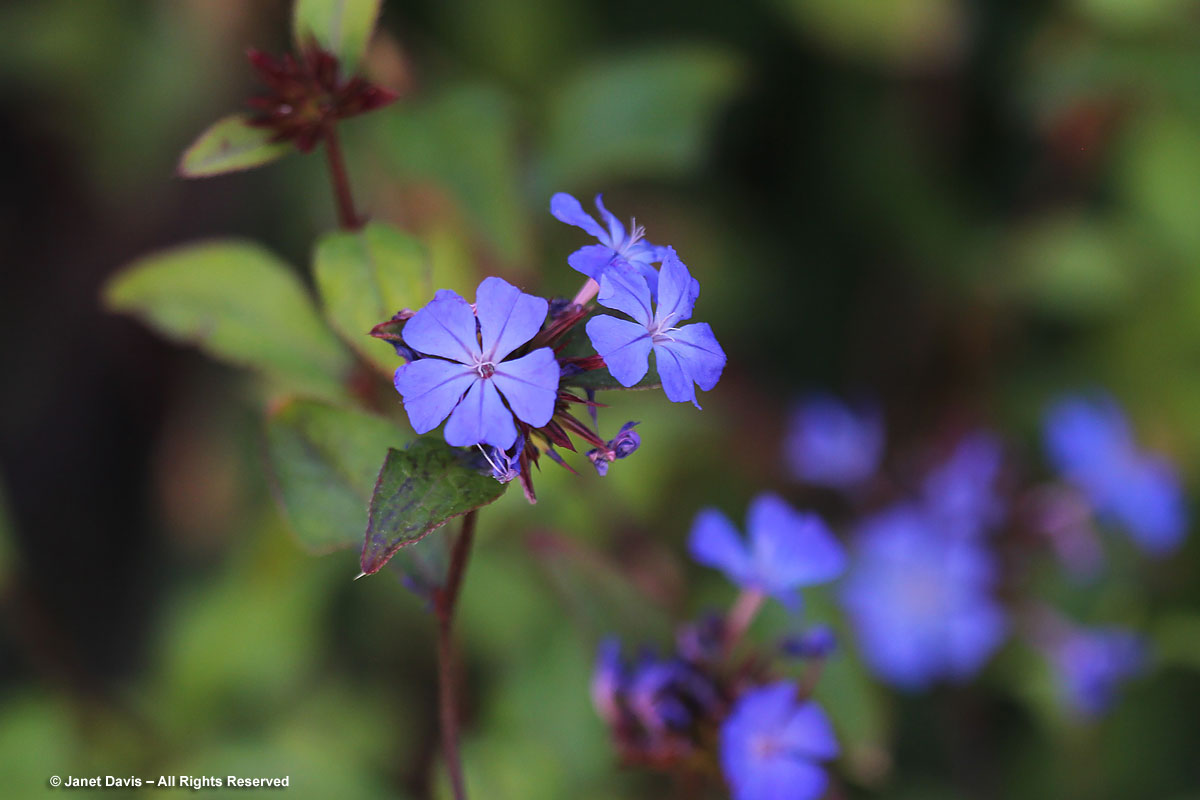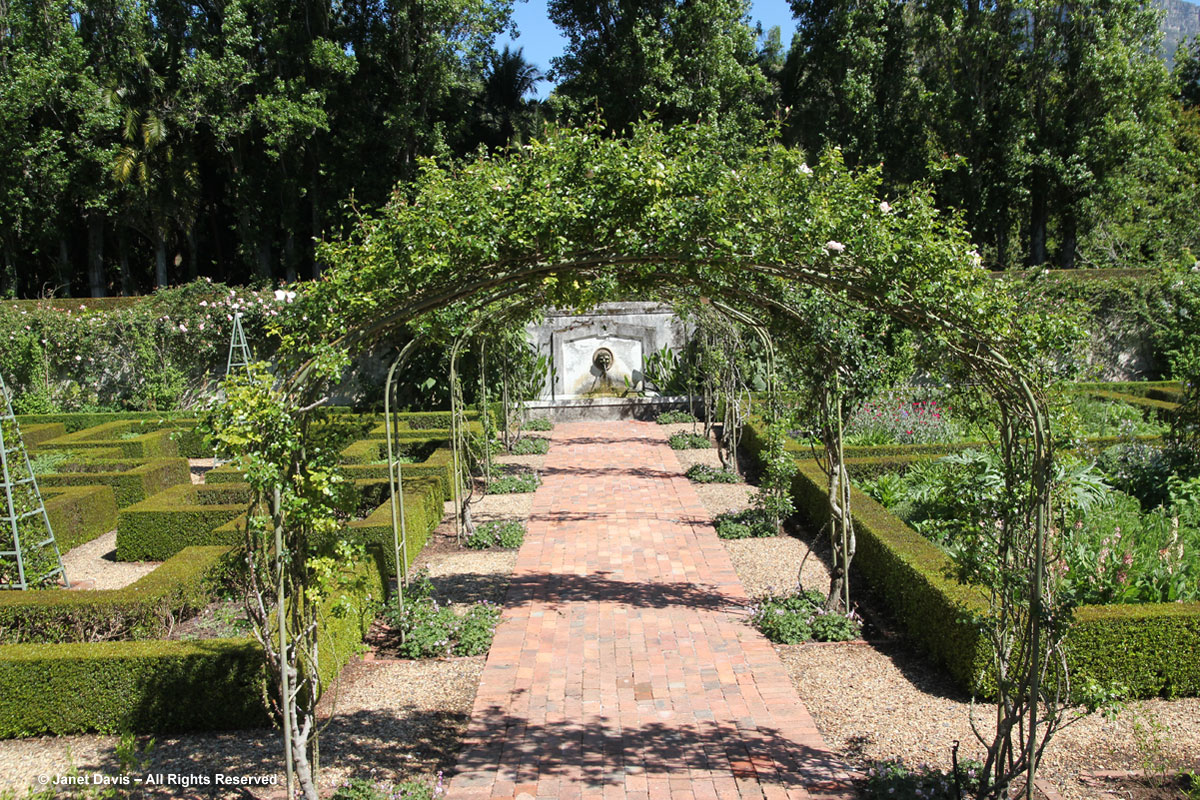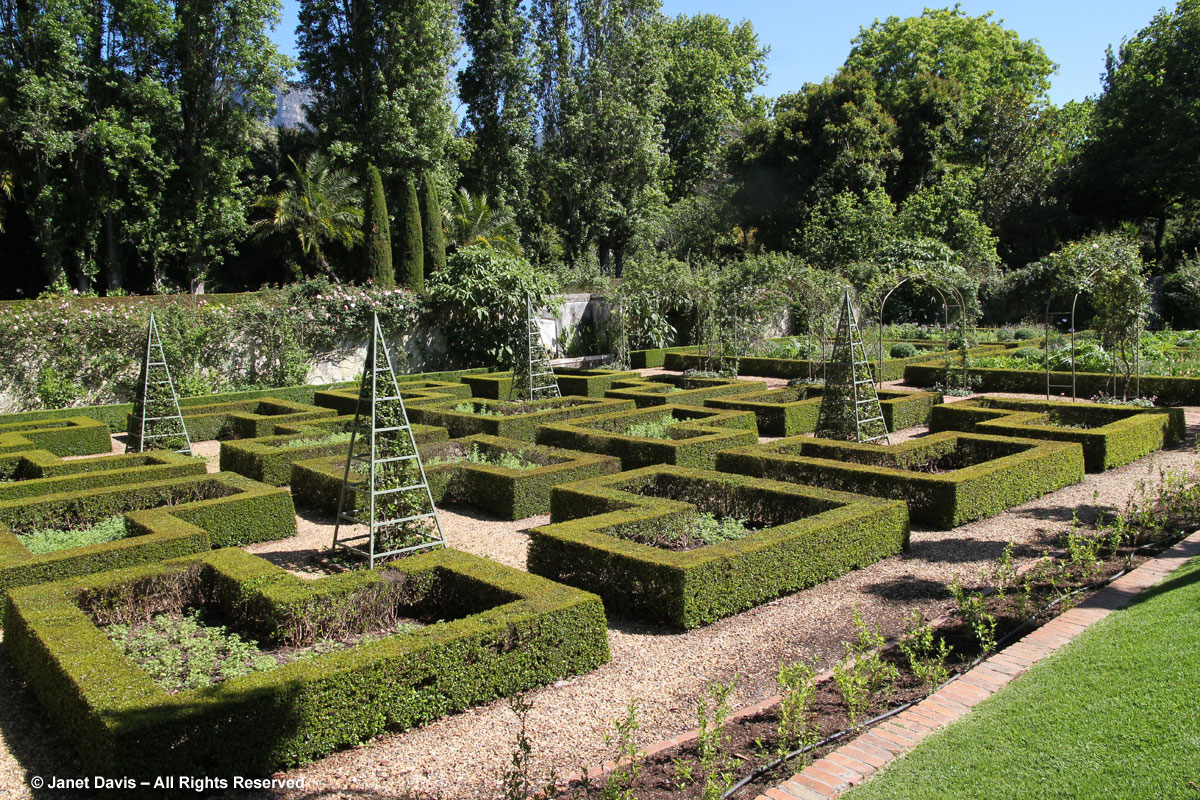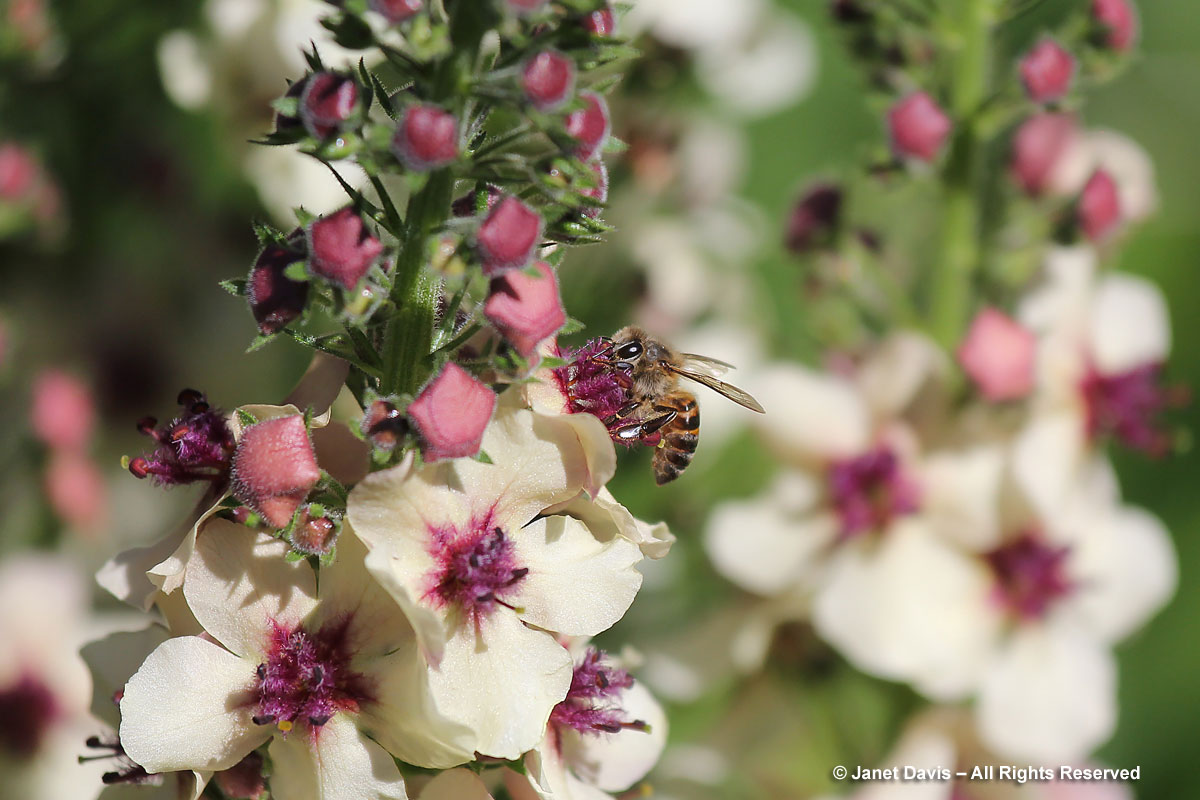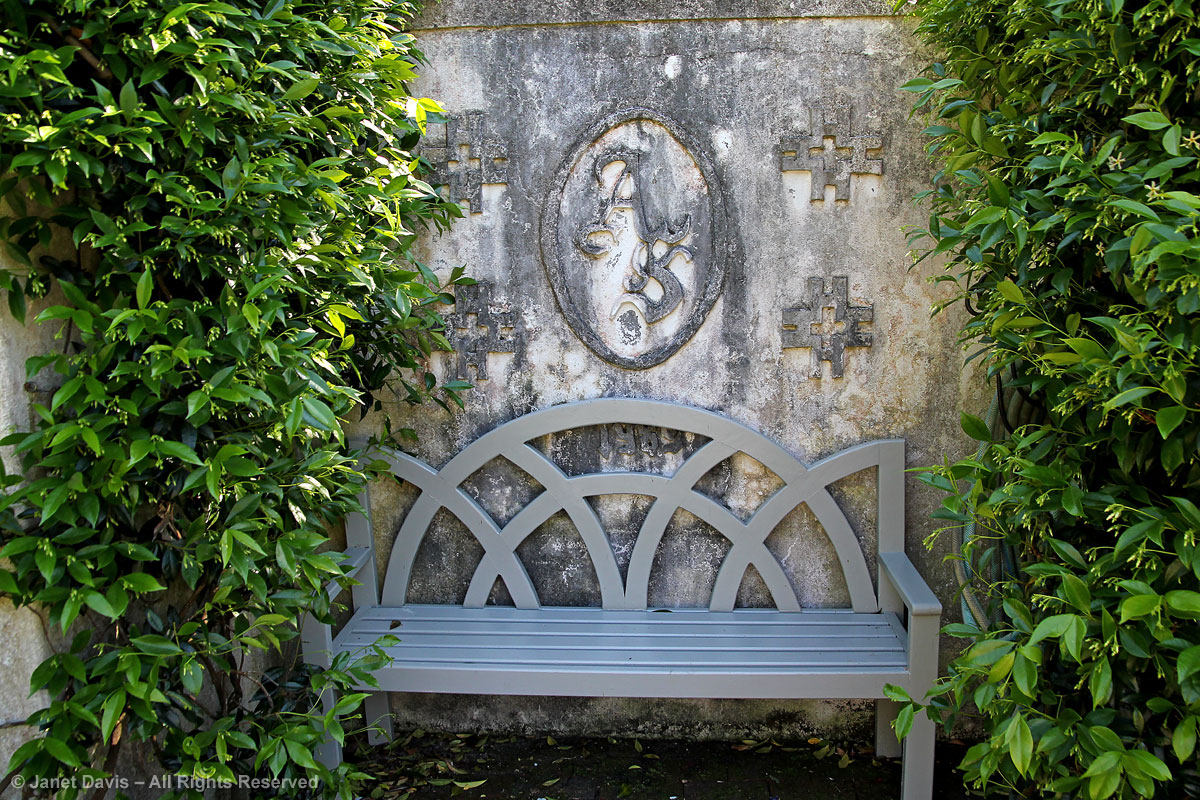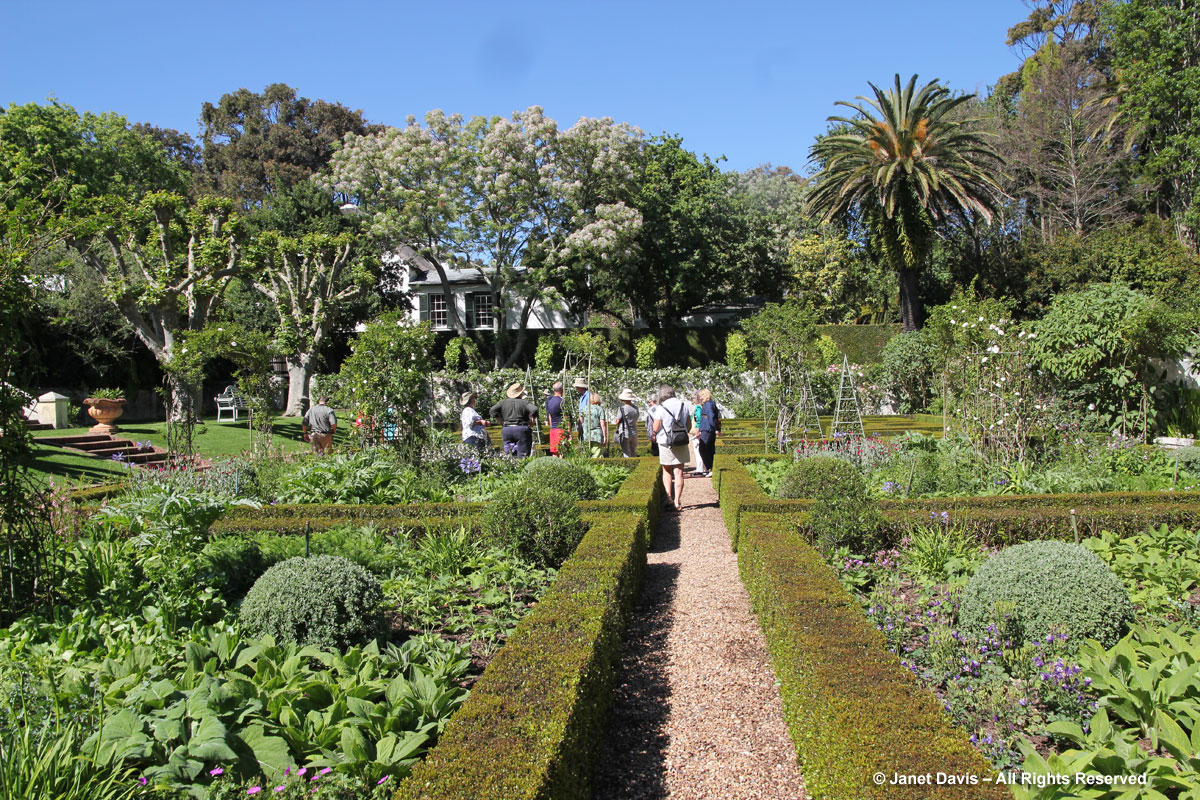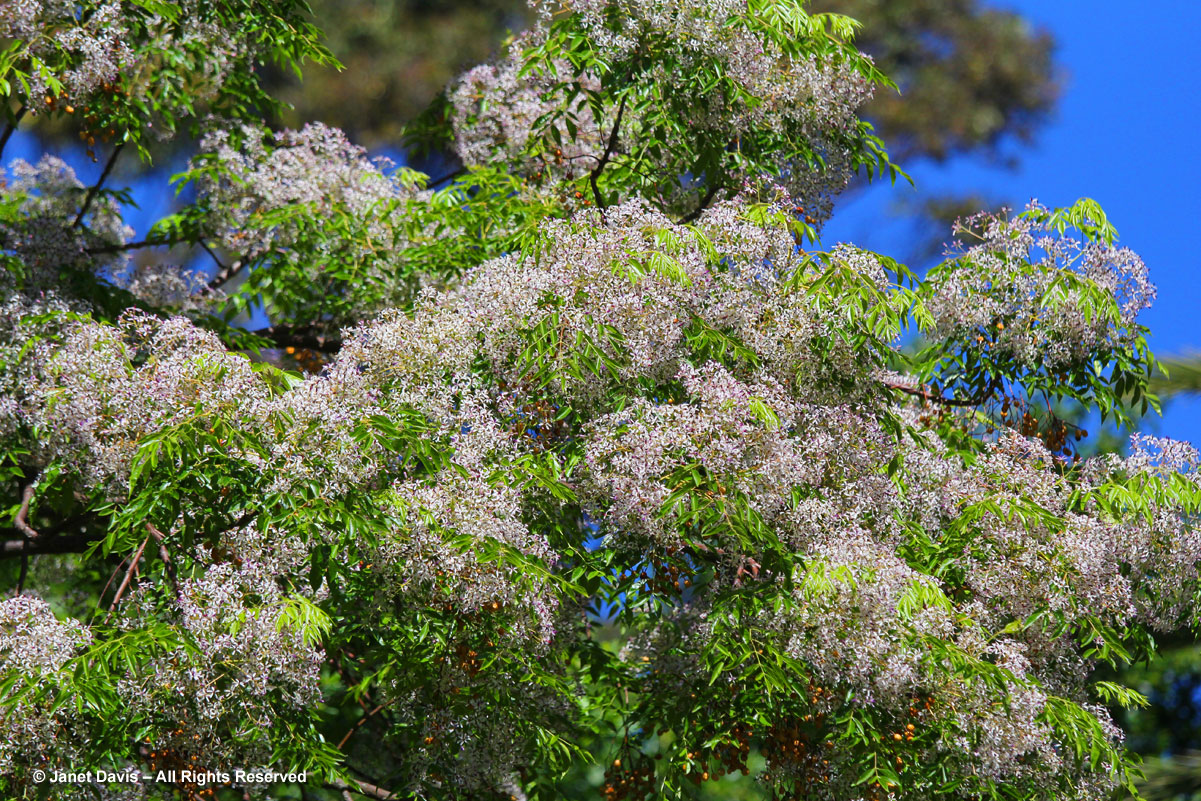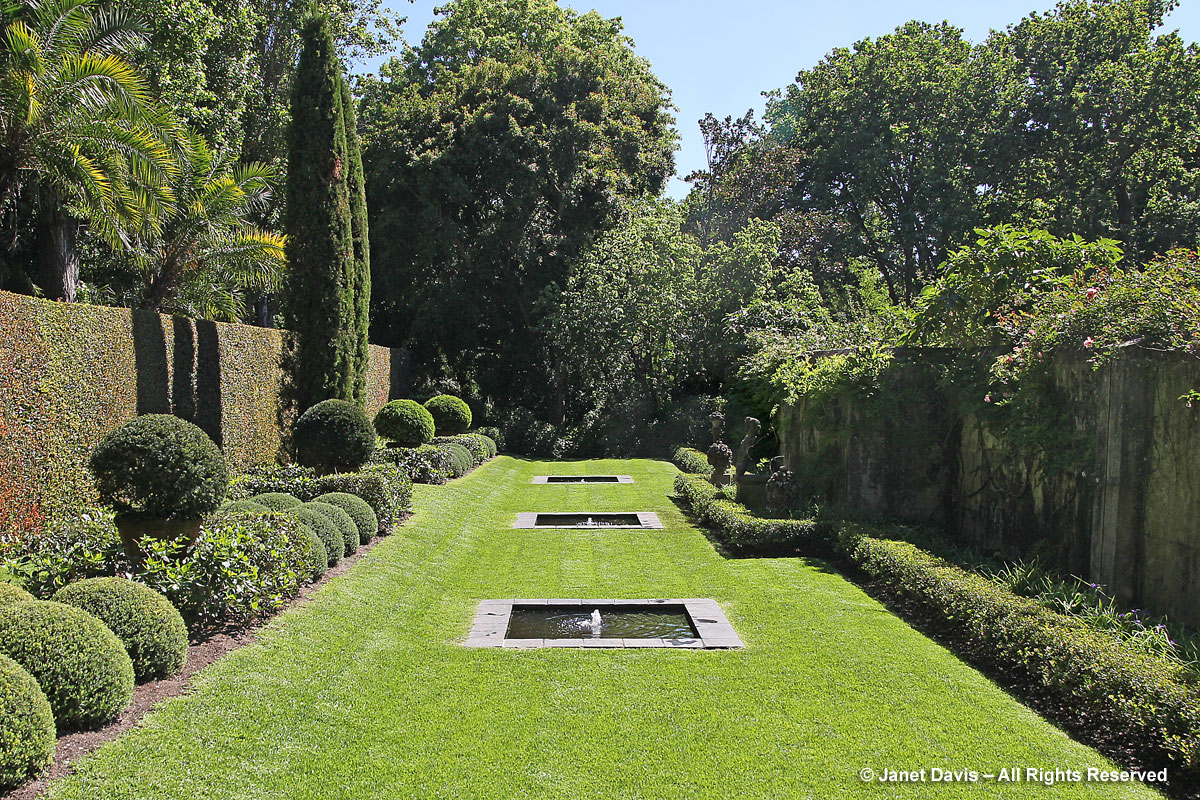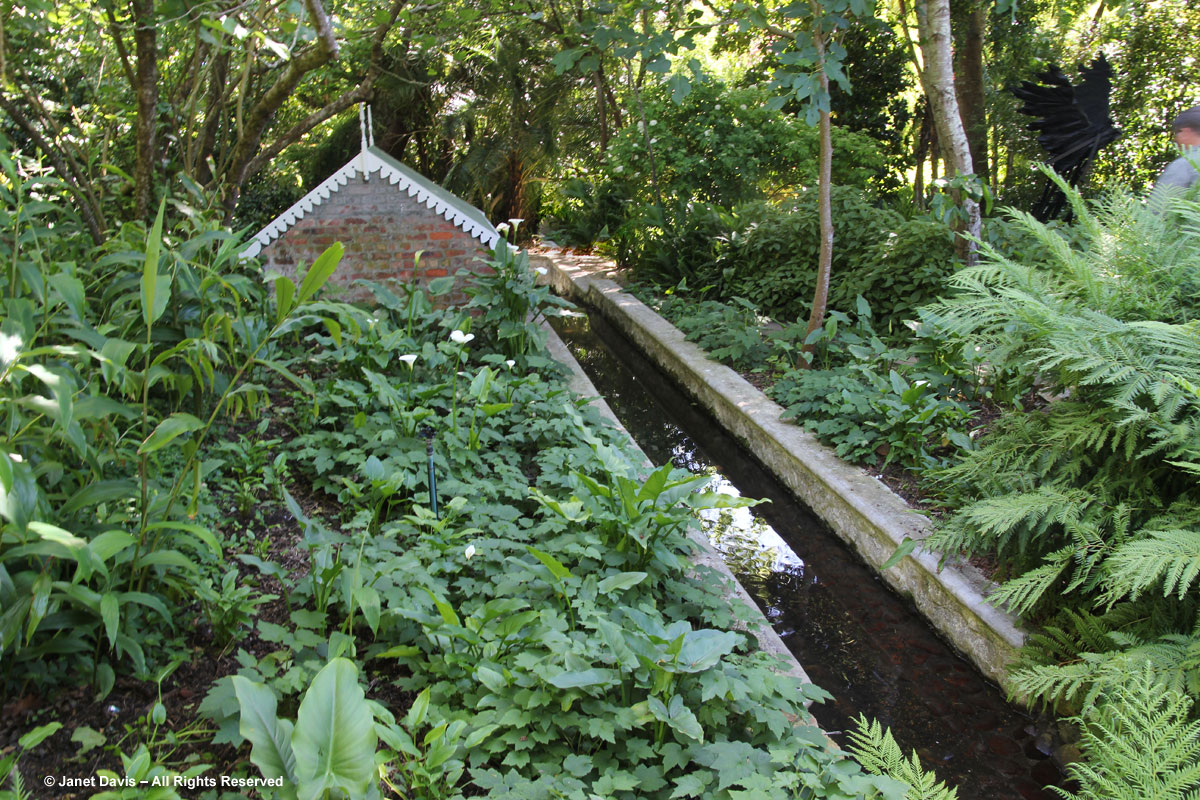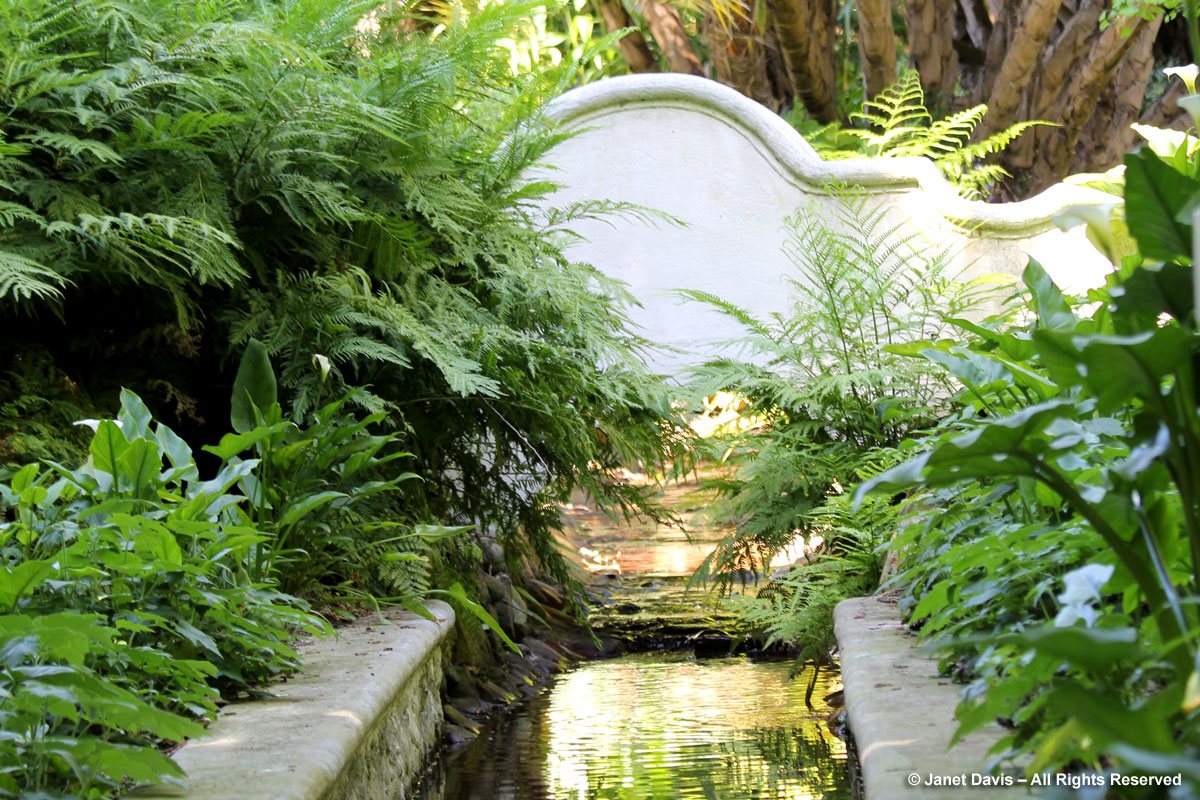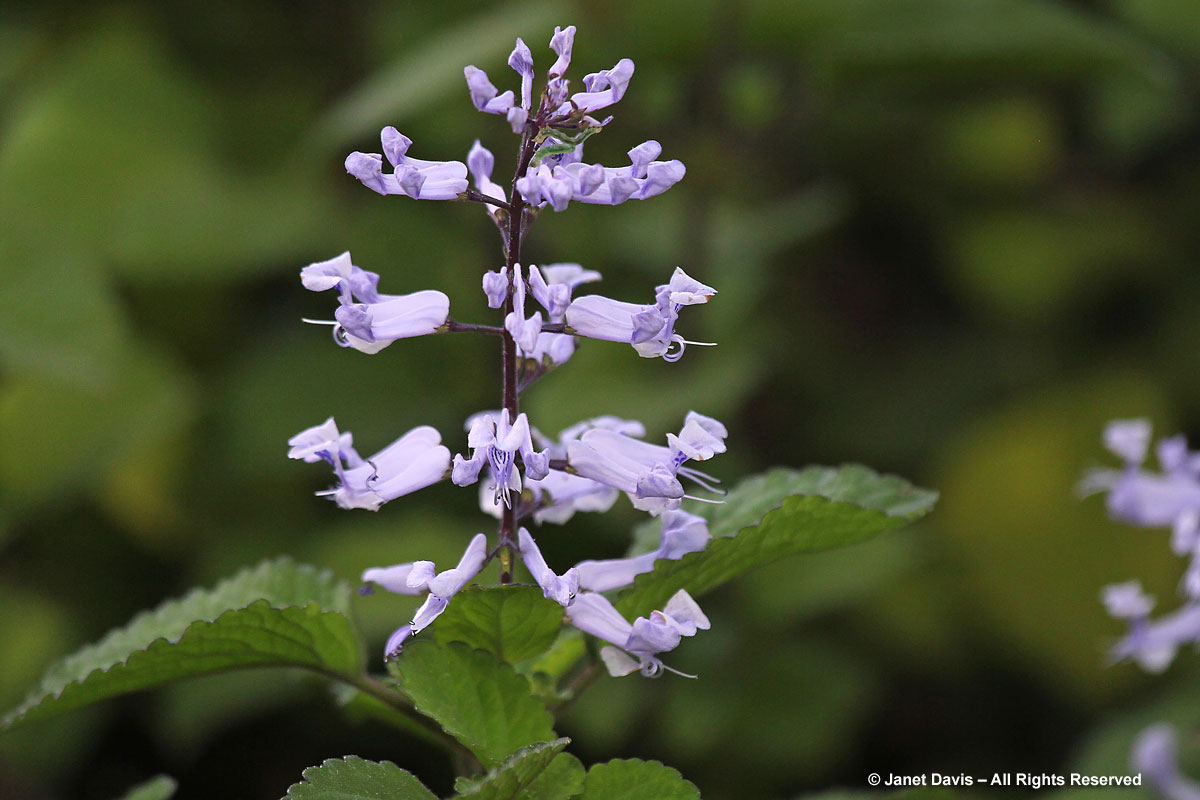It doesn’t take long to understand why Stellenberg Gardens, the first stop on Day 8 of our South Africa garden tour, has been showcased internationally on the BBC and is the subject of its very own book. Situated in a leafy section of Cape Town’s Kenilworth neighbourhood, the house is owned by Andrew and Sandy Ovenstone and has been in Andrew’s family since 1953. We are greeted by the family’s three tail-wagging dogs.
There are beautiful, mature trees surrounding the house, including a native North American pin oak (Quercus palustris). Oak trees have been a hallmark of Stellenberg since its beginnings.
Head gardener Athol McLaggan begins his history of the 6-acre estate as we make our way to the front of the house.
To reach the front, we wander through the lovely White Garden one of many discrete garden rooms on the property. Even at this time of year (October or mid-spring in Cape Town), there are beautiful examples of plants – often fragrant ones – that shimmer in the darkness.
For example, variegated confederate jasmine (Trachelospermum jasminoides ‘Variegatum’) thrives in Cape Town’s subtropical climate and is exquisitely-scented.
Four plants from Stellenberg’s White Garden are, clockwise from top left: chincherinchee (Ornithogalum thyrsoides); ‘White Barlow’ columbine (Aquilegia vulgaris); St. Joseph lily or Easter lily (Lilium longiflorum); and the rugosa rose ‘Blanc Double de Coubert’.
A shaded alfresco dining pergola is adjacent to the White Garden and, if you look closely, you can see white wisteria overhead. How romantic this table would be under the stars! Through the opening at the end…..
….you can see an original Stellenberg urn presiding over irises in the Parterre Garden. Behind is a high hedge of scented Japanese honeysuckle.
The front of the house faces the garden and displays the perfect symmetry of the Cape Dutch architectural style. In fact, some sources consider Stellenberg – which was declared a National Monument in 1971 – to be the finest extant example of that architectural style, since it has not been altered significantly since it was built in the 1740s, soon after the property was deeded via land grant from the Dutch East India Company. As we gaze up at the historic gable, sculpted in the Cape Baroque style in the 1790s by Anton Anreith, master sculptor to the Company, I marvel at all the Cape Town history this house has seen. Through a long and colourful succession of owners, it finally became the property of Jenk and Renee Ovenstone in 1953 and later passed to Andrew and Sandy.
After Sandy arrived at Stellenberg in 1973, she was content for a while with the inherited landscape of well-established lawns, trees and shrubs. But over the next 14 years, she nurtured her growing passion by learning all she could about gardening; touring famous Engllish gardens like Sissinghurst and Hidcote; and local gardens such as Babylonstoren in Drakenstein Valley, while being mentored by other Cape gardeners, including the owner of the beautiful Rustenberg Wine Estate in Stellenbosch. (I will be blogging about Babylonstoren and Rustenberg later). Finally in 1987, with the help of interior designers Graham Viney and Gary Searle, she created her first garden, the formal Herb Garden in the shape of a cool green St. Andrew’s Cross.
Nearby is the Medieval Garden with its fountain hewn from Paarl granite and its combination of vegetables, fruit. and…..
…… altar flowers and medicinal herbs, like sweet cicely (Myrrhis odorata) seen here with pansies, columbines and scabiosas. This garden was designed with Franchesca Watson Braisler.
Adjacent to the house is the swimming pool with its borders of cool blue- and purple-flowered plants enhancing the pool’s turquoise colour.
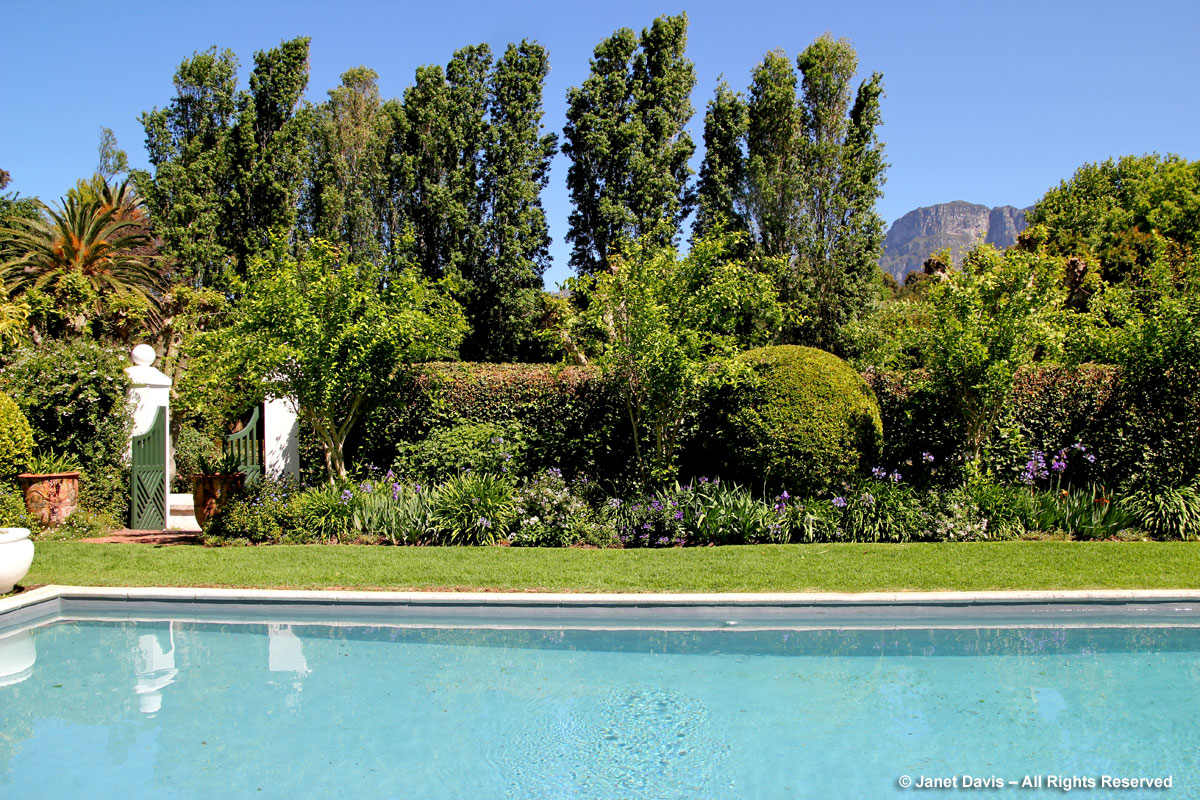
Luscious agapanthus and scented heliotrope are in bloom in the borders now, and…..
….. blue Willmott leadwort (Ceratostigma willmottiana) puts on its own show as well.
The famous Walled Garden – once a tennis court – was designed with the help of the late British interior and garden designer David Hicks. Though originally planted in roses….
the Walled Garden has been reworked to include beautiful combinations of perennials, with the parterres divided by clipped myrtle hedges. I think how lovely it would be to see the parterres a few months from now, in full bloom.
A honey bee nectars on Verbascum chaixii ‘Wedding Candles‘ in the Walled Garden.
Andrew and Sandy’s initials (and David Hicks’s too) overlook a Luytens bench commemorating their silver wedding anniversary in 1989.
The view to the house through the Walled Garden shows the billowing canopy of a syringa tree (Melia azardach)…
…..with its masses of light-mauve blossoms.
The Garden of Reflection features three simple black pools to reflect the sky and is planted with an understated palette to encourage a feeling of quiet contemplation.
The new Stream Garden is a testament to the natural water source that was a factor for the founding of the original 18th century farm at Stellenberg, as it would have been vital for crops. Though we see Stellenberg’s gardens at the end of a wet winter, summer are very dry and the stream can be re-circulated if necessary.
A narrow whitewashed bridge traverses the stream, contrasting crisply with the cool green of the shade-loving foliage plants here.
We depart Stellenberg via the Wild Garden with its indigenous African plants. Here, a beautiful native plectranthus (P. zuluensis) catches my eye, as it seems to symbolize Sandy Ovenstone’s desire to experience gardening in all its guises, including that inspired by the magnificent native flora of South Africa itself.
And then it’s onto the bus, for we have a special garden visit and lunch ahead at the renowned Cellars Hoehenhort in the Constantia Valley.

